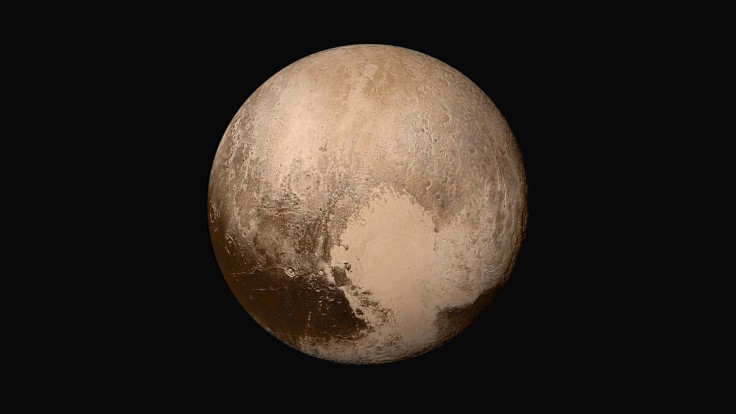Planet Or Dwarf? Pluto Incorrectly Lost Planetary Status, Study Suggests

We all love Pluto. The cute dwarf planet sits at the edge of our solar system, drawing attention with its unique properties, including a massive heart-like surface feature. It has long been a subject of scientific studies, but years of observations have also led to a major conflict, one related to its classification as a dwarf.
If you’re from the 90s or before, you must remember Pluto as the ninth planet of our solar neighborhood. However, the International Astronomical Union (IAU), which is the prime body for characterizing and classifying space objects, took that designation away in 2006, leaving Pluto in the category of dwarfs.
The decision drew immediate flak from many, and now after more than a decade, a group of astronomers and planetary scientists have shown the classification was made on the basis of an invalid criterion.
The criterion in question, as the researchers described, is the ability to "clear the neighborhood." According to IAU’s definition, a body has to be gravitationally dominant and clear the neighborhood around its orbit to be classified as a planet.
Pluto’s gravitational force wasn’t that strong. It was influenced by the pull of neighboring planet Neptune and had Kuiper belt objects and frozen gases in its orbit, which prompted the global body to classify it as a dwarf.
However, after reviewing more than two centuries’ worth of planetary literature, researchers from the University of Central Florida concluded IAU’s standard to distinguish between planets and other celestial objects wasn’t the ideal way to judge Pluto.
The group reviewed a major chunk of researches and found only one publication followed the "clearing orbit" approach for classifying planets. This methodology was adopted way back in 1802 and has been disproven by many. In other words, IAU’s definition of a planet comes from a concept nobody uses at the moment.
“It's a sloppy definition," Philip Metzger, the lead author of the work, said in a statement. "They didn't say what they meant by clearing their orbit. If you take that literally, then there are no planets, because no planet clears its orbit."
Apart from that, the researchers also noted scientists have been using the term planet to describe moons as well, like Jupiter’s Europa or Saturn’s Titan.
"We now have a list of well over 100 recent examples of planetary scientists using the word planet in a way that violates the IAU definition, but they are doing it because it's functionally useful," Metzger added.
The researchers added bodies, particularly those like Pluto, should be classified on the basis of their natural properties rather than features that could change – like their orbit.
"Dynamics are not constant, they are constantly changing," Metzger added. "So, they are not the fundamental description of a body, they are just the occupation of a body at a current era."
The correct way of classification, as they suggested, could be based on the element of size, like if a body is large enough to allow its gravity to make it spherical in shape and trigger active geological processes like those – underground oceans, organic compounds, multi-layered atmosphere – we see on Pluto.
“It's more dynamic and alive than Mars," Metzger concluded. "The only planet that has more complex geology is the Earth."
The study titled, “The Reclassification of Asteroids from Planets to Non-Planets,” was published Aug. 29 in the journal Icarus.
© Copyright IBTimes 2024. All rights reserved.





















